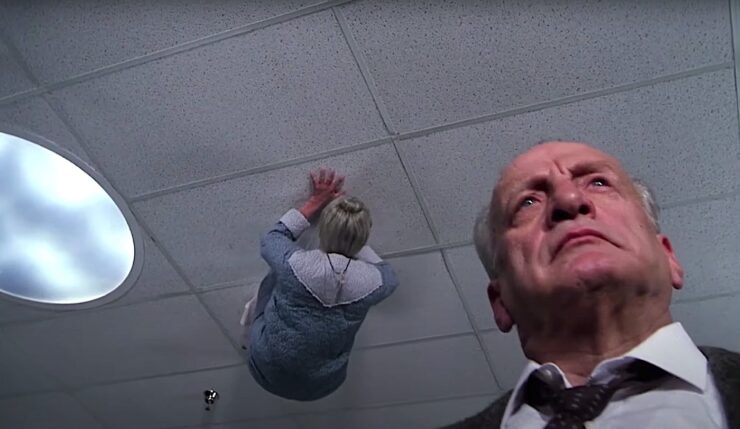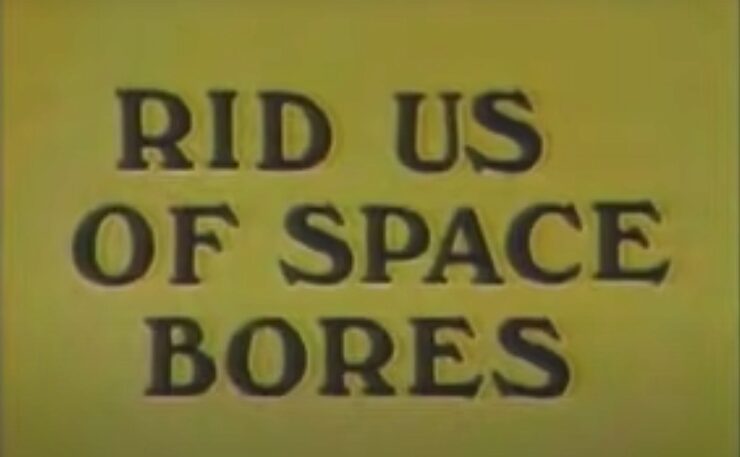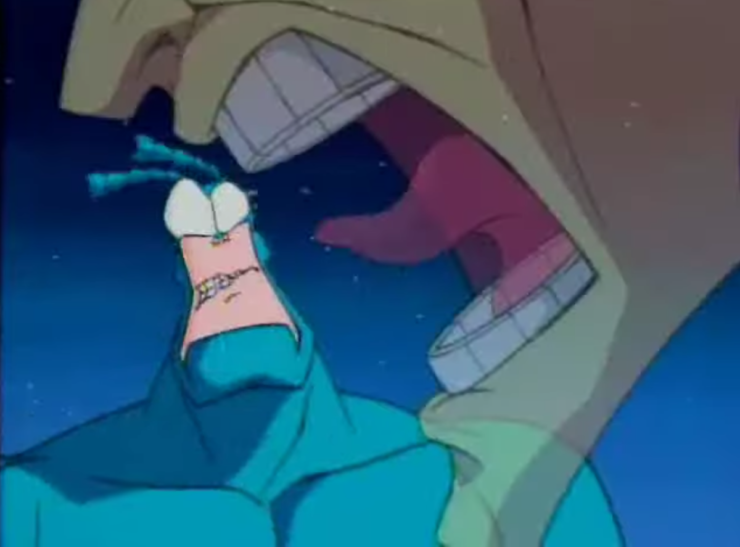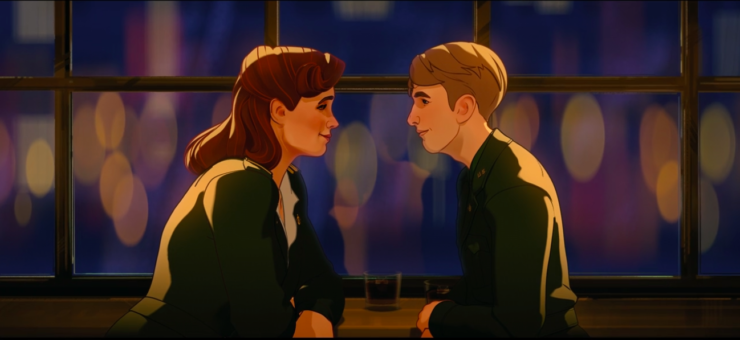Welcome to Close Reads! Leah Schnelbach and guest authors will dig into the tiny, weird moments of pop culture—from books to theme songs to viral internet hits—that have burrowed into our minds, found rent-stabilized apartments, started community gardens, and refused to be forced out by corporate interests. This time out, Michelle Jaworski breaks out the knitting needles (and possibly some extra buttons) to talk about Coraline’s amazing tiny sweaters.
Have you ever contemplated the effort it takes to make that famous and immediately eye-popping sweater or knitted garment that appeared on the screen (and just became your new obsession)?
Sometimes, a film or TV show’s costume designer might purchase it before purposely ruining it to illustrate a character’s utter disregard for taking care of their things. Sometimes, a knitter will make it by hand, putting care into items that populate a lived-in world or turn into the most iconic part of a character’s costume. Sometimes, the inclusion feels so effortless and invisible that nobody else seems to appreciate it how you do.
And then there’s sometimes an instance where a film is so painstakingly crafted with such detail, care, and precision before you even consider the knitwear that it blows your mind when you finally get around to it. A film like LAIKA Studios’ 2009 stop-motion animated classic Coraline—from stop-motion legend Henry Selick (The Nightmare Before Christmas, Wendell & Wild) and based on the 2002 novel by Neil Gaiman—and its perfectly tiny, hand-knitted sweater might do that to you.
Introduced about 45 minutes into the film, Coraline Jones (Dakota Fanning), the 11-year-old heroine of Coraline, sneaks through the hidden door in her new home to another world, one which offers affectionate parents, presents, delectable food, and instant entertainment. Her Other Mother (Teri Hatcher) and Other Father (John Hodgman), who look and sound just like her real parents save for the black buttons sewn into their eyesockets, aren’t home. But her Other Mother left Coraline a gift: A new outfit made just for her, and an invitation to visit their neighbors after lunch.
What’s in the box? A bright and sparkling blue sweater imbued with silver stars that catch your eye in the light, black corduroy pants, and boots much closer in hue to Coraline’s iconic blue bob. After donning this outfit, Coraline witnesses the full spectacle of this other world with a showstopping performance, as well as the Other Mother’s cruelty. She learns the truth of what the Other Mother plans to do with her with the only light coming from the glow of the sweater’s stars and the three young ghosts who fell victim to the Other Mother before her. And even as Coraline and Other Wybie (Robert Bailey Jr.) are captivated by the show Coraline’s neighbors put on, you can’t keep your eyes off that sweater.
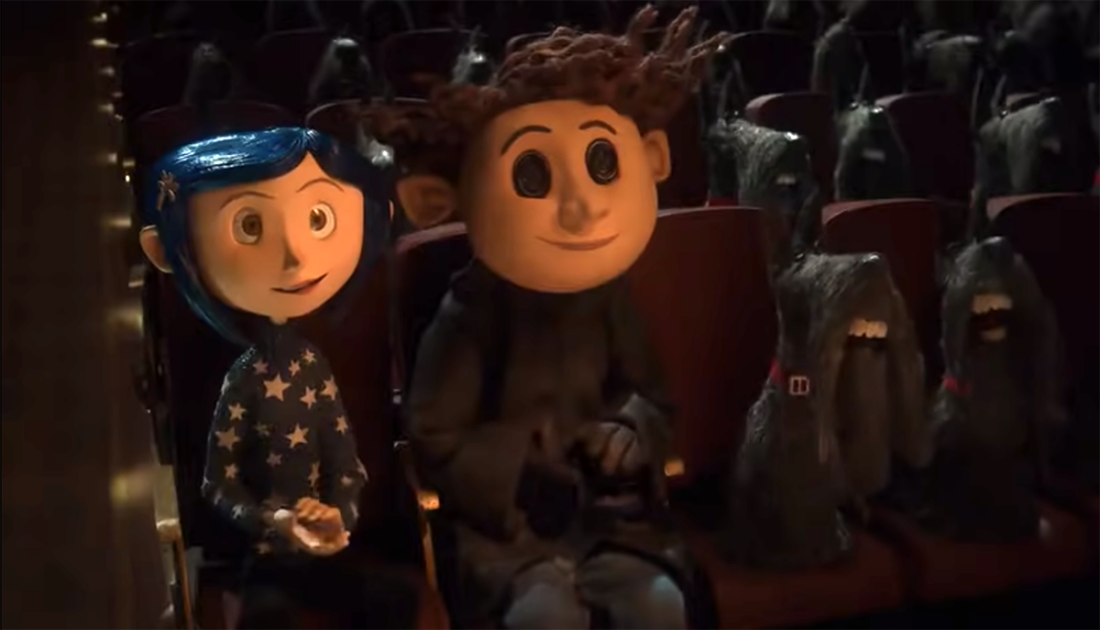
As a knitted piece of clothing, Coraline’s sweater is deceptively simple. It’s a pullover that limits itself to a single combination of thread (compared to the multi-colored striped gloves Coraline tries on in a store in our world) and doesn’t contain flourishes like cables; the stars were attached after the fact. Coraline’s costumes often stand out with whichever world she’s inhabiting—she’s usually the most colorful person in the room in the real world’s gloomy atmosphere and appears to dim the more time she spends in the fantastical Other World—and the chameleonic nature of the sparkly thread used to knit it further amplifies that. The stars also glow in the dark, making it look even cooler.
Coraline’s sweater was captivating enough in its own right that as part of the film’s marketing, Jenn Jarvis was tasked with creating a human-sized pattern—with both children and adult sizes included—geared toward fans who wanted to make a sweater of their own; Jarvis’ pattern is no longer officially online, but you can find it if you know where to look.
It’s Althea Crome, a fiber artist who’s been making conceptual knitted garments (meaning without a set pattern) on a miniature scale for decades, who is responsible for creating that original starry sweater and Coraline’s striped gloves; she’s listed as “Knitwear Creator” in the film’s credits. According to a 2009 interview with The Oregonian, Crome said that LAIKA’s costuming department contacted her about making knitted pieces for the film, which involved weeks of searching to find the right combination of threads—a mix of holographic and polyester—to match what LAIKA had in mind. Once Crome got the go-ahead to knit the sweater, she was sent a version of Coraline’s body to make it fit on the puppet; she eventually made 14 sweaters and six pairs of gloves for LAIKA.
But that doesn’t begin to cover the scale of it. It’s one thing to hear or read about it. It’s another to view Crome’s documentation of her work on Coraline, which includes photos of the threads she used or photos of what it looks like for her to knit something on that scale. It’s another to watch Crome fully in her element, which we can do courtesy of a LAIKA behind-the-scenes video where she discusses her miniature knitting.
“I think knitters are often fascinated by the fact that I use such tiny needles,” Chrome says in the video. “Some of the needles are almost the dimension of a human hair.”
Um… yes?
I’m in awe of what Crome has created not just because, as she put it, she shrunk a “craft or skill into something so tiny it asks the viewer to imagine how it was done.” I’ve been knitting for about seven years, so even before you shrink a hand-knitted garment, the wheels turn to calculate what goes into making something like a sweater or pair of gloves. My eyes are straining from the sheer thought.
But Crome’s work only amplifies that. To put it in perspective, the smallest set of knitting needles I own is a US 0, which has a diameter of 2mm; I might use them to work on a pair of socks or gloves. It’s kind of easy to misplace them, or accidentally break one of those needles if it’s made of a material like wood. Crome knits with needles so thin that she compared their fineness to human hair.

Crome’s needles are much smaller, the thread much thinner, and the scale is on a minuscule level (the entire span of the sweater is about four inches). One of Coraline’s gloves, measured from cuff to fingertip, isn’t much bigger than one of our fingernails. I can see Crome knitting on needles small enough to be used for sewing or embroidery, and I see what the result of that is on the screen, but all this time later, my mind still can barely comprehend it.
It’s that level of fine detail that makes Coraline’s world of stop-motion come to life. Even if you’re not thinking about the sweaters as often as I might be, it’s the kind of element that feeds into making Coraline’s more nightmarish elements feel that much more real.











